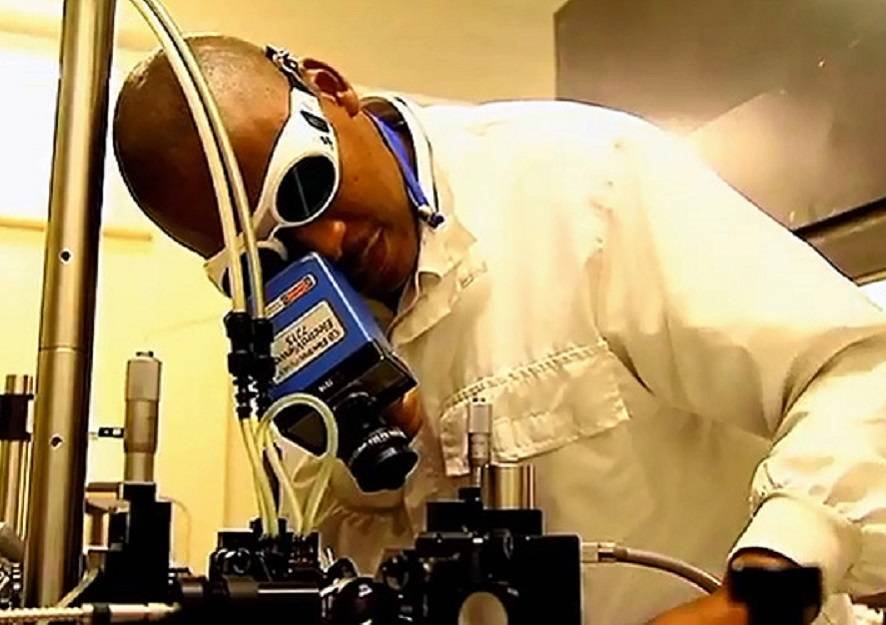The ubiquity of lasers is no doubt an evident phenomenal. A multi-billion dollar industry, lasers are used in barcode scanners in shops, in surgical equipment in hospitals, in office equipment such as laser printers, in DVD players and lighting displays at concerts, and for cutting and welding industrial materials in factories.
Experts across the world had over the years tried to create a digital laser, which they argued would be more efficient, but they all failed until 2013 when a South African scientist developed the breakthrough technology as part of his Ph.D. research.
University of KwaZulu-Natal scientist, Sandile Ngcobo, who was a key part of the team at the Council for Scientific and Industrial Research’s (CSIR) National Laser Centre, developed the world-first digital laser to pave the way for revolutionary new technologies for communications, medicine, manufacturing, among others.
The team basically showed the world that laser beams can be digitally controlled from within a laser device. With South Africa then blessed with one of the few labs in the world that specializes in holograms and lasers, Ngcobo was able to start developing the digital device with direction from his boss, Professor Andrew Forbes, who led the research team.
“Do you know what this means?” was the question Forbes posed when Ngcobo showed him a graph of the project. “The thing is I didn’t expect it to work and he did a fantastic job and when he brought this one particular graph inside my office I immediately realized this laser had worked this time and I knew that people all over the world had been trying to make it work. It really was an amazing graph to see, to realize that you’ve just re-invented a 50-year-old technology,” Forbes told Daily Maverick in 2013.
Everyone else was proud of the team including then Science and Technology Minister, Derek Hanekom, who couldn’t hide his joy about the creation when it was launched.
“This is what is often termed a breakthrough – and it is a real breakthrough. The digital laser opens up new visions of laser applications…Seeing world firsts come through from labs in South Africa is a joy shared across the scientific community, especially when young students are involved in this hands-on way,” Hanekom read a statement from Igle Gledhill, then President of the South African Institute of Physics.
Lasers have been made up of a box featuring two mirrors that bounce light before releasing it. And with the digital laser using an LCD screen, like a television, scientists will be able to digitally control laser beams.
“…We teach this little television what to do if we give it a particular picture and what it should do to the light,” Forbes explained. “And the result is that one of the mirrors in our laser is digital because it’s a liquid crystal television. You can show pictures to this television and every time we change the picture, the laser beam out of the laser changes. And that’s why we call it the digital laser.”
He said: “The big advantage is rather than design a new laser for every shape you want, you know only have to have one laser and just change the picture on your computer and you get a new device.”
As of 2013, the CSIR team was improving the device to make it stronger and faster, and to finalize the patent. The team announced that from there, it will partner with an organization to produce an applied prototype and hope to get the device in use soon.
Ngcobo believed the digital laser will be a ‘disruptive’ technology, and could change the status quo while creating new markets and value networks within the next few years.
Records show that physicists, including Albert Einstein, were, as early as 1900, studying the relationship between energy and the frequency of radiation. It was only in 1960 that laser technology was developed while the word laser, which is an acronym for “light amplification by stimulated emission of radiation”, was coined in 1967.
It is therefore extraordinary, said Hanekom, that scientists from South Africa from 2013 onwards will be mentioned alongside Einstein as contributors in the history of the laser.
“Actually, they have taken this technology forward; hence we say this innovation is ground-breaking.”

